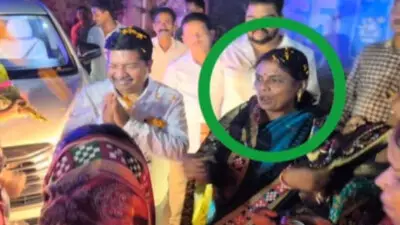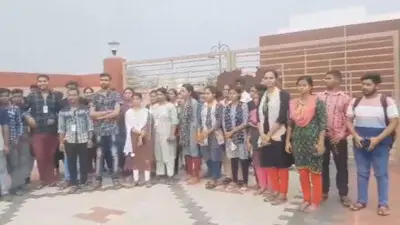By Srinibash Samal
Denizens take religious dips in ponds and rivers to visiting temples and offered special prayers as ‘Makar Sankranti’ is being celebrated with pomp and grandeur in Odisha.
According to the lunar calendar, when the sun moves from the Tropic of Cancer to the Tropic of Capricorn or from Dakshinayana to Uttarayana, in the month of Pousha in mid-January, it commemorates the beginning of the harvest season. The days start becoming longer and warmer compared to nights. It thus marks the end of Sharatarutu and the beginning of Hemantarutu.
The Makara Sankranti is regarded as the beginning of an auspicious period because the sun starts its annual shift towards the Earth’s northern hemisphere from Makar Sankranti. It is believed that the rituals are sanctified from this day onwards. From the sunrise to sunset, the environment has more divine consciousness.
LEGEND
Several anecdotes about the importance of this Sankranti are mentioned in the epics. On this day Lord Vishnu ended the ever-increasing terror of the Asuras by finishing them off and burying their heads under the Mandara Parvata. So the occasion represents the beginning of a period of virtuous living.
Beginning this day, Surya visits his son Shani and spends a month with him. Though father and son do not get along well, Surya makes it a point to visit Shani once a year. Therefore, the day signifies the importance of the relationship between father and son.
Most importantly, King Bhaghiratha performed the great penance to bring river Ganga to the earth for the redemption of his pitrupurushas - the thousand sons of king Sagara who were turned to ashes through a curse by Kapila Muni on this day.
Apart from the religious importance, Sankranti also coincides with the harvesting festival. The farmer community observes it in a big way. By this time, the harvesting is over and it is a period of plenty with the reeks and barns full with freshly harvested paddy. Toiling hard since Raja Sankranti, they find a period of rest and relaxation and enjoy the time. Life in the community bursts with festivity and joy. A traditional dish- Makar Chaula is prepared with uncooked and newly harvested rice, banana, jaggery, coconut and mixed with ghee, tila (sesame seed), and Chhena puddings which is offered to the Gods and Goddesses for their kindness. This authentic dish is quite important for the devotees and is definitely prepared on this day.
But the festival is not just about the celebration of harvest or the worship of Sun God, it is also about the bond of friendship. It can simply be put as the friendship day of Odisha where individuals choose a friend and consider him or her their best friend for a year. If a male chooses another male as his best friend, he will address him as Maharshad or Marsad whereas if a woman chooses a female as a best friend, she will address her as Makarathe whole year. This tradition is usually followed in Western Odisha and is known as Makar Basma. If this tradition gets followed in every other state, it might just strengthen the bond of friendship among everybody.
At Shrimandir, Puri the deities are dressed in Makar Chaurashibesha. They wear Makara chula (a special headgear). Uttarayana Jatra and Uttarayana Bandapana is performed. Special puja is offered to the deities and the Makara Chaula is taken round the temple premises that is known as Makara or Nabankabeda. Besides Makara Chaula, people make varieties of rice-based sweet pithas. Since the Sankranti is in the midst of winter, the food eaten during this time is meant to keep the body warm and to give extra energy.
Makara melas are observed at many places mainly at Dhabaleswar near Cuttack, Hatakeshwar near Atri in Khurdha, Makara Muni temple in Balasore. In the areas of Mayurbhanj, Keonjhar, Kalahandi, Koraput, Sundargarh and Ganjam districts, where tribal population is in majority, it is celebrated with great zeal and joy.
Another important event of the day is kite flying. The period is favourable for the pastime. Children and adults fly kites of different shapes, size and colour and enjoy. In some places, kite flying competitions are also organised.
The festival is celebrated by different names in different parts of the country, Lohri in North India, Bihu in Assam, Pongal in Tamil Nadu and Makar Sankranti in Bengal, Bihar, Odisha and the neighbouring regions.
(DISCLAIMER: This is an opinion piece. The views expressed are the author’s own and have nothing to do with OTV’s charter or views. OTV does not assume any responsibility or liability for the same)
[Srinibash is a freelance author and can be reached via
E-mail: srinibash.samal3@gmail.com
Twitter: @srinibash_samal
Blog address: thesrinibash.wordpress.com]













